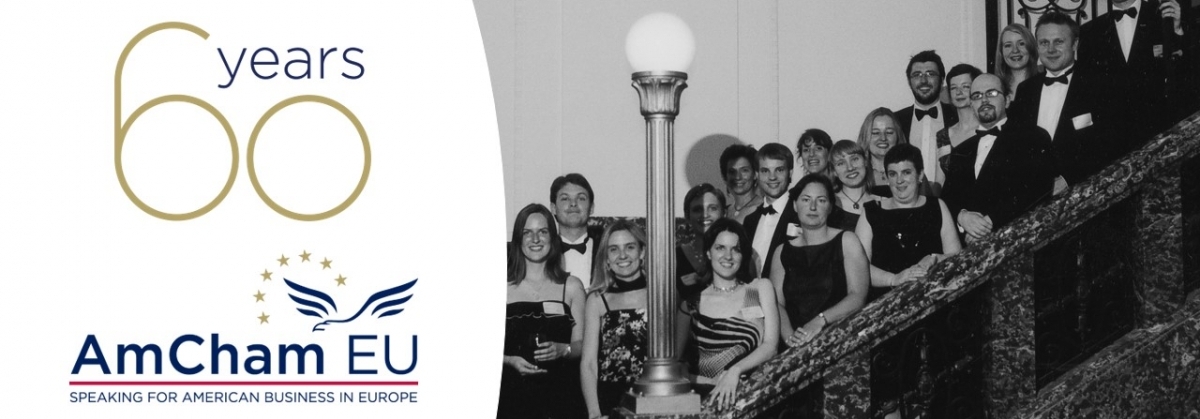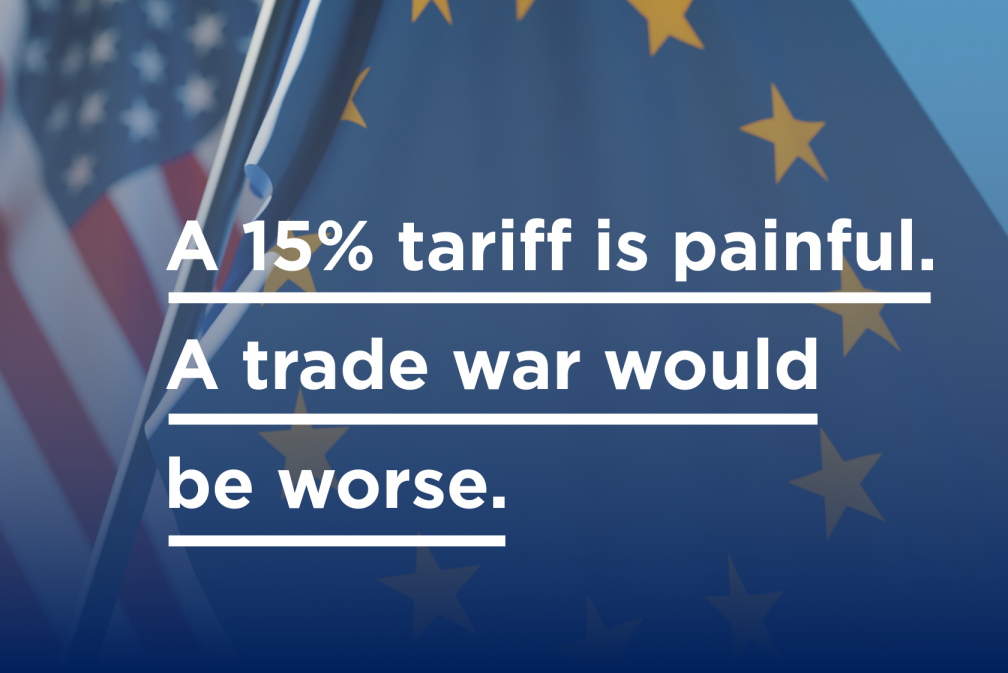
Credit: European Parliament Multimedia Centre
1960s
The year 1962 was a busy one all over the world: the Cuban missile crisis nearly turned the Cold War into a hot war, the first James Bond film, ‘Dr. No,’ was released and the Telstar 1 satellite enabled the first transatlantic television transmission, between France and the US.
That wasn’t the only advance in transatlantic communications; 1962 was also the year the Common Market Panel of AmCham Belgium – AmCham EU’s forerunner – met for the first time. Working together, the initial handful of panel members sought to open a dialogue between the developing European institutions and American companies doing business in Europe and operate in its emerging Common Market.
Throughout the decade, the European Economic Community (EEC) drew closer together by removing customs duties within the Union and harmonising tariffs from third countries. At the same time, American investment soared to €1.6 billion, a more than €500 million increase from the 1950s.

Credit: European Parliament Multimedia Centre
1970s
The 1970s continued the trend of European integration with Denmark, Ireland and the UK all joining the EEC in 1973. Despite years of global stagnation, American investment in Europe didn’t wane. The growing European marketplace garnered greater interest from the American business community, and by the end of the 1970s, US investment had reached €9.3 billion.
As the European project picked up steam, the Common Market Panel reorganised into the EEC Committee in 1978. More than ever before, American companies needed to speak with one voice to actively participate in transatlantic dialogue and contribute to Europe’s future.

1980s
Prior to the 1980s, it could take years – if not decades – for a single piece of legislation to pass through the then-European Community (EC). Initiatives were rarely far reaching, and coordination within and between institutions was often difficult.
That all changed in the late 1980s with the announcement of the forthcoming Single Market. From then on, it was full speed ahead to be ready for the 1 January 1993 deadline. A legislative process that had previously taken years was condensed to, in some cases, only months. In the midst of the transformation, it was challenging for both stakeholders and governments to follow the many legislative initiatives under review.
Into this environment stepped the EC Committee. Its first dedicated staff worked with members to create a comprehensive database of EC legislation and publish a series of reference guides to European legislation, as well as the who’s who of Brussels. Before internet search engines, these publications established the Committee as a valuable source of information for not only American companies but the Brussels bubble as a whole.
As the American business community’s investment in the harmonising European marketplace increased, so too did the EC Committee’s membership, which grew from 39 in 1984 to 98 by the end of the decade.

1990s
Along with the economic, political and cultural changes that followed the end of the Cold War, the Single Market’s success throughout the 1990s demonstrated that openness and market access were key drivers of prosperity. Resources, projects and staff moved freely across borders, giving companies and consumers more options than ever before. As a result of this integration, the European market became even more attractive to US businesses.
The EC Committee grew hand in hand with Europe and in 1995, changed its name to the European Union (EU) Committee to better reflect the bloc’s rapid economic and political harmonisation. Under its new moniker, the Committee continued to produce insightful publications that were read throughout Brussels. Even more than in past years, the Committee’s staff and members applied their cross-sectoral expertise to advise policymakers and stakeholders on the issues of the day.
Technology also changed drastically in this period. Computers and internet replaced typewriters and fax machines for working and communicating, making organisations like the EU Committee more efficient and more valuable than ever before – just in time for the EU to begin a new chapter.

2000s
Throughout the 2000s, the EU reformed its institutions and grew to include a total of 28 Member States. As Europe entered a new phase of history, the EU Committee continued to evolve alongside it. In 2003, Committee members unanimously voted to rebrand and become independent. The organisation was reborn as AmCham EU.
The expanding bloc enabled AmCham EU to find common ground with a more diverse range of stakeholders from newer Member States and various European institutions. As its membership increased, reaching 150 in 2005, so too did the policy issues the organisation engaged with and its relationships with stakeholders on both sides of the Atlantic.

2010s
The 2010s were marked by the effects of the global financial crisis that impacted economies in Europe, the US and around the world. At the same time, social media flourished and transformed how individuals, businesses and governments communicated amongst themselves and with each other.
Amidst these seismic changes online and offline, AmCham EU launched social media accounts to participate in conversations on both sides of the Atlantic. Clear, insightful analysis and strong, consistent messaging helped the organisation rise above the noise and amplify its advocacy. Internally, AmCham EU responded to the changing external environment by reorganising its teams to ensure the voice of American companies continued to be heard in Brussels and in Member State capitals across the EU.

2020s
The COVID-19 pandemic and the largest land war in Europe in 70 years has already made the 2020s a turbulent decade – one that is not even halfway over. However, AmCham EU has demonstrated once again its resilience and adaptability.
Contributing to Europe’s economic recovery has become a top priority, which means pushing towards the EU’s goals of building more digital and sustainable economic models without losing sight of the need for international alignment. By embracing new ways of working online and through hybrid practices, members and staff together have deepened relationships with stakeholders and continued to advocate for the policies businesses and communities need to thrive.
Looking to the future
AmCham EU has proved time and time again that it has its finger on the pulse of Europe, evolving into a trusted policy partner for decision-makers. While this legacy will live on, the organisation will continue to transform, adapt and respond to an ever-changing environment.
What will AmCham EU look like in the years to come? What issues will it work on? And how will the future of the EU and the transatlantic relationship evolve in the coming years and decades?
Despite the changing names and the changing times, AmCham EU’s mission today is the same as it was in 1962: a united Europe and a strong transatlantic relationship. Both priorities will be just as essential throughout the next 60 years as they have been during the previous decades.



